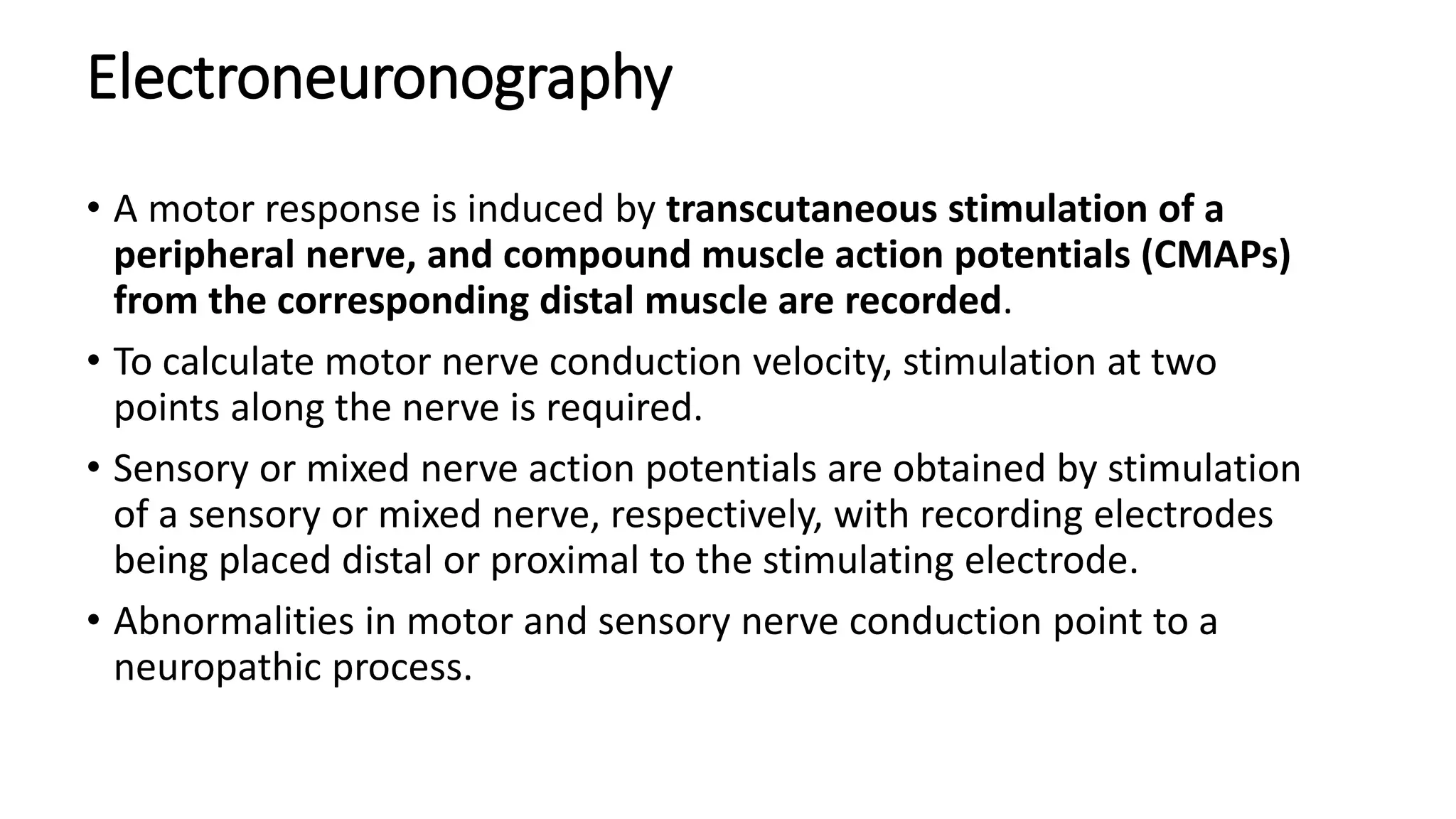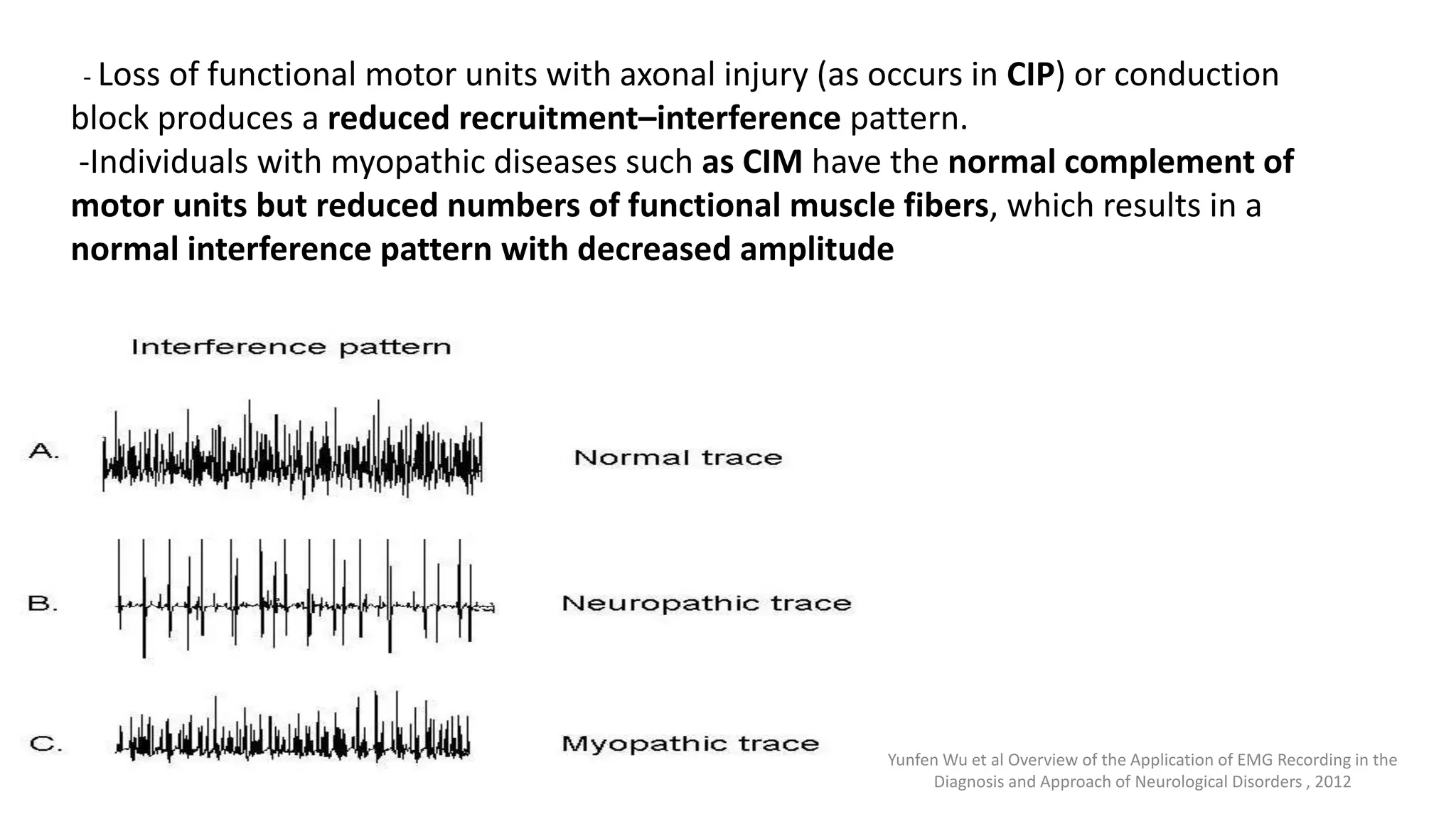This patient is a 46-year-old female with a history of rheumatic heart disease, severe mitral stenosis, and ischemic heart disease who presented with worsening breathlessness and palpitations. She developed cardiogenic shock, acute kidney injury, coagulopathy, and metabolic encephalopathy during her hospital stay. Electrodiagnostic testing showed findings consistent with an axonal neuropathy. She had a prolonged critical care course complicated by infections and multi-organ dysfunction before passing away. Critical illness myopathy and polyneuropathy are common neuromuscular complications in critically ill patients that can lead to prolonged mechanical ventilation and recovery.








































